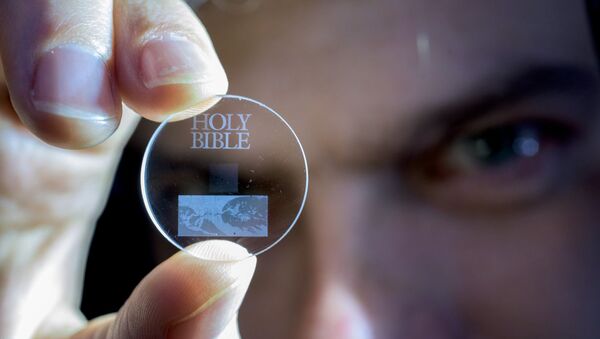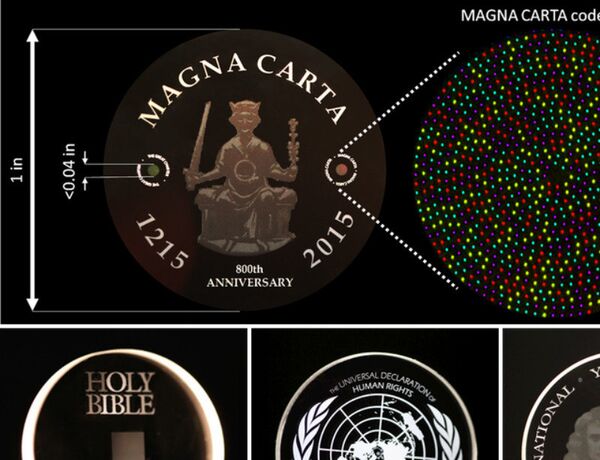"The storage allows unprecedented properties including 360 TB/disc data capacity, thermal stability up to 1,000°C and virtually unlimited lifetime at room temperature (13.8 billion years at 190°C) opening a new era of eternal data archiving," the university announced in a press release.
The researchers have succeeded in using the technology to make digital copies of major documents from human history such as the Universal Declaration of Human Rights, Newton's Opticks, the Magna Carta and the Kings James Bible. They say the development could be particularly useful for organizations with big archives, such as museums and libraries.
The information encoding is realized in five dimensions: the size and orientation in addition to the three dimensional position of the nanostructures, which can then be read by a combination of optical microscope and polarization filter.



